
Huset's Speedway History
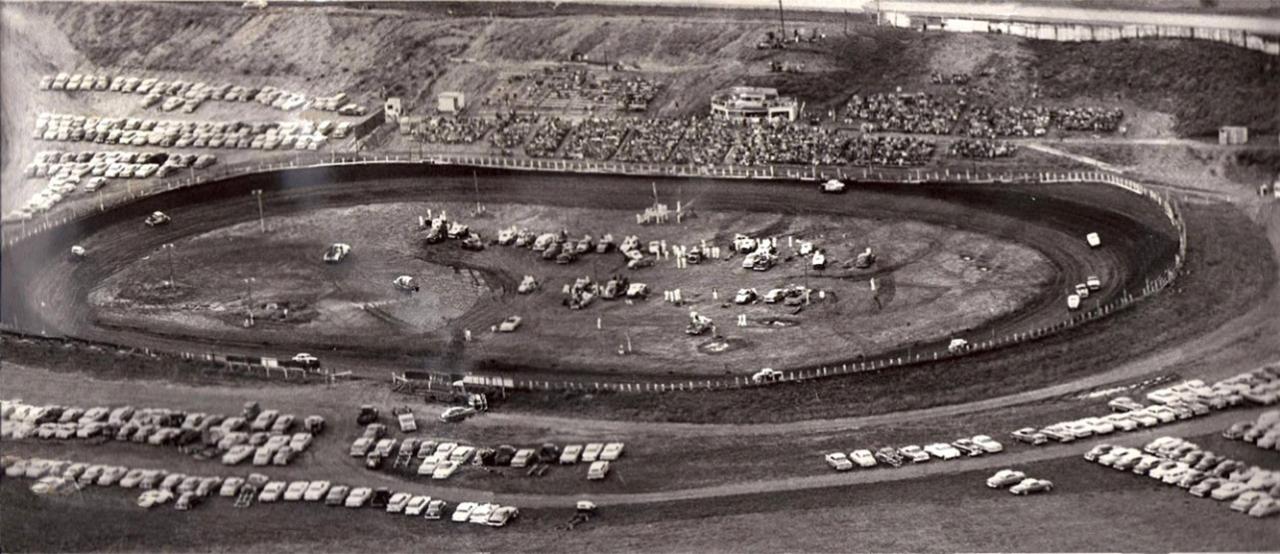
Huset's Speedway sits on what once was an old farm. In fact today, the land of which the track sits on today is still zoned within Minnehaha County (S.D) for Agriculture use. Til Huset owned the plot of land legally referred to as County Parcel #10324 - TR 1 & 2 NW1/4 ( EX LOT 1 TR 1) 10 101 48 SPLIT ROCK TOWNSHIP 101-48. Til Huset and his family would have farmed on this land from the early 1900's up until the 1950's when he decided to convert the use of the land to house his racetrack, what became known today as Huset's Speedway.
During the summer of 1953, the Til would have been developing the track, the early form of bleachers on the side of the hill, in preparation for the first race to be held in May of 1954 on Mothers Day. The area known today as Three Rivers Bluff would have encompassed all the lands south of Brandon, South Dakota stretching from 264th Street northward towards the southern part of Brandon. While Splitrock Creek flows thru this area, the entire land area was predominantly used for agriculture.
As Huset's Speedway held its first races during the summer of 1954, another track near Sioux Falls became just as popular, perhaps even more so, as the Van Ann Family of Francis and Bob moved their racing operation from Rock Rapids, Iowa to purchase land east of Sioux Falls along what today is known as Six Mile Road. They built their racetrack along S.D Hwy 38 or today what is known as S.D Hwy 42, it sat along Six Mile Road which back then was a gravel road.
Soo Speedway (Sioux Falls-South Dakota) 1954 to 1959
Located @ S.D Hwy 42 and Six Mile Road
Soo Speedway held its first race a week after Mothers Day in the year 1954, on a Sunday Night, meaning it rivaled Huset's Speedway for about one year. In fact, one could argue, Soo Speedway was the place to be every Sunday Night, as local stock car racing was held each week at 8 o'clock sharpe, while the track with its sophisticated watering system, thanks to the creek that runs along the back stretch, Bob Van Ann had built a watering system by placing watering valves in each of the four turns, abling him to connect a garden hose to each valve, which allowed him to pump water into the track from the creek. Every evening, Bob could be seen watering the track on foot, with his garden hose. The track was known to never be dusty, always moist, and nicely prepared, it had infield lighting, something Huset's did not have, which made "Old Soo" even more popular, and the track had a nice set of bleachers that could hold up to 3,000 people, unheard of back in the day.

While Soo Speedway ran every Sunday Night, Huset's would experiment racing on Friday Nights, Saturday Nights, to Sunday afternoons, as it had no lights, it could not run past sunset, making Soo Speedway the more desirable destination for racers, and that meant, Soo Speedway attracted the fans, as it packed the grandstands each week, more sponsors from Sioux Falls businesses, and it averaged nearly 40-60 stock cars per race.
Huset's Speedway could not compete, it closed its doors for good mid-summer 1955, leaving Soo Speedway as "The Track" in the area. The racers decided to protest during 1956 to convince the Van Ann's to raise the purse, back in those days, racers ran for a percentage of the back grate, meaning they were racing for $800 to $900 total purse; after the '56 protest, the Van Ann's promised to up that pruse to 40% of the backgate, meaning they now were racing for $1,000 to $1,500 a week whereas the winner would get $250 while show up money was around $15 dollars a week. In the 1950's that was a pretty good purse.
The Car counts began to dwindle down during the 1957 season, that is when the Van Ann's had a excellent idea in order to generate more excitement, support, and new racers, they split the Stock Car Class into two classes, creating the Modified class - this now splits that backgate in half, providing a purse to two classes, which now angered the top racers, and during the summer of 1958 - the drivers again boycotted by lining their tow rigs along Six Mile Road blocking people from entering the track. The demanded a bigger percentage of the backgate, and a percentage of the grandstand revenues as well. The Van Ann's led by Bob - this time did not give an inch, lets face it, the grandstand revenues made up of concessions and ticket sales pretty much paid the track expenses, while those profits were invested back into the track facility itself, and, lets face it, Soo Speedway was a very sophiscated facility, for its time.
The racers then pack up, go to the local YMCA -form and establish the Sioux Falls Stock Car Association. Its purpose - to sell bonds to purchase Huset's Speedway from Till Huset. The "Association" was a group of Racers led by Fred Buckmiller, Clarence Rubin, Bill Leesch, along with Sioux Falls Business Owners, the Fans as well. I mean, this group was becoming a very powerful bunch of men. They made Mr Huset an offer, and purchased the land by mid-summer, and by August, held their first race at Huset's Speedway. And they had to do a ton of preparation, Huset's had sat idle for nearly three years, old man Til Huset had allowed the track to become abandoned, lay in ruins, while he used the infield to park all his vehicles, farm equipment, let alone, lets just say, the track by July 1958 was not recognizable as a track any longer.
Soo Speedway attempted to hold races into 1959, but by July 1959 - the roles were reversed, and Huset's was now the show in town. Old Soo closed its doors for good, selling all its bleachers and the announcer booth to a group of investors who were building a track south of Madison, South Dakota, what became Inter-Lakes Speedway, and finally Lake County Speedway holding races from 1966 to 2006.
Francis and Bob Van Ann rode off into the sunset, but it was Bob's son Tom - who rose to prominence. By his 16th birthday in the mid 1970's - he needed a job, and he took a job at Huset's Speedway, a place he once felt ruined his fathers track, he rose all the way to the top brass as Vice President of Business Operations.
In the early years of Huset's Speedway, from 1959 to 1987, under the ownership of the Sioux Falls Stock Car Association - the racers nominated and put in place three track promoters. Fred Buckmiller promoted the track from 1959 until his death in 1981, Ed Flowers became the promoter for the 1982 and 1983 seasons, while Bill Leesch promoted the track from 1984 to 1987. During the winter of 1987-88 the group put the track up for sale, and top two bids were two original members - the Leesch Family and the Rubin Family. Well, you know who became the sole owners of Huset's from 1988 to 2016 - Clarence, Greg, and Steve Rubin.
Thanks to Francis and Bob Van Ann - racing came to the Sioux Falls and Brandon areas; thanks to a committed group of racers, fans, and local business owners, we have made the Sioux Falls Metro Area a #1 most popular destination for many fans, racers, making motorsports 'the top spectator sport' in the Sioux Empire. All thanks to three families, the Van Ann's who brought racing to the area establishing Soo Speedway, the Leesch Family of Jerry and Bill who purchased the abandoned Hartford Speedway and held races at that track beginning that year, and finally, the Rubin Family of Clarence, Greg, and Steve pushed Huset's into the future. Three dedicated families, each responsible in their own way to make auto racing the most popular sport in the area.
Beginning in 1954, Sioux Falls, Brandon, and Hartford residents thanks to Francis and Bob Van Ann (Soo Speedway 1954-1959), Walt Zirpel (Hartford Speedway 1977-1983), Bill and Jerry Leesch (Hartford Speedway 1988-1997), and Clarence, Greg, and Steve Rubin (Huset's Speedway (1988-2016) - the area has become a popular destination for many racers, fans, and local business support today.
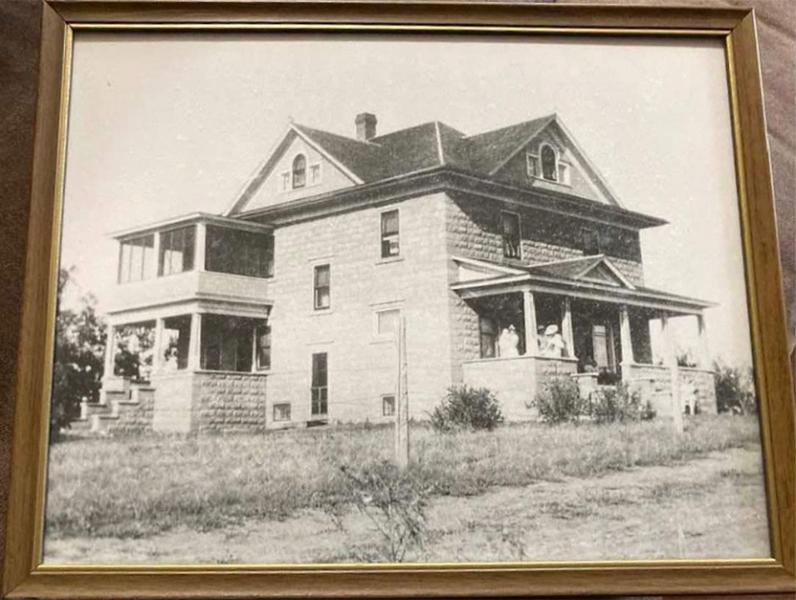
Lands which once were farmland, became racetracks, while the house pictured here once sat on this land:
The Former Sievert Swenson house built 1913 @ Three Rivers Addition
(The House Sat at 264th Street and McHardy Road - Overlooking Huset's)
This old home was just across Splitrock Creek from Huset's Speedway, sitting at the corner of 264th Street and McHardy Road. It overlooked an area that today has become a popular destination for racers and fans.
The area today, making up the Huset's Speedway Addition, Gardners Addition, Thompsons Second Addition, and of course the Three River Bluffs Addition - all farm land, all interconnected by Splitrock Creek.
Farming Communities - now famous thanks to Huset's Speedway (Brandon, South Dakota).
Huset's Speedway, a racetrack that sprung up in the 1950's thanks to the many people who had the desire to bring Auto Racing to the Sioux Empire
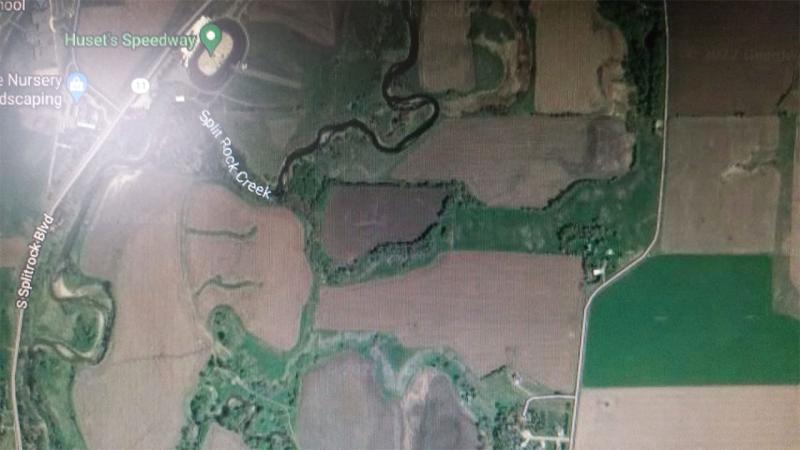
HUSET'S SPEEDWAY...the story continued....
The Splitrock Area for decades, for decades, has had a long and interesting story to tell, and the families who claimed, and resided within the area have cherished the breathtaking views of the area over looking the Splitrock Creek valley, and the stories we learn of today, we must remember the very people who call the area home, actually lived it.
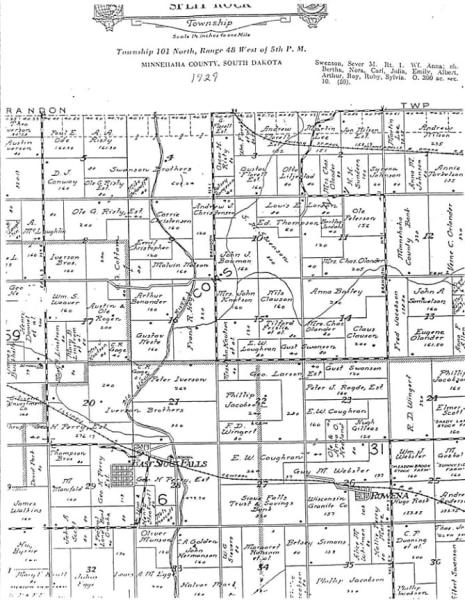
Minnehaha County Land Use/Zoning Map - 1929
As you begin to search the map here, we can begin to locate some very specific reference points, locating family plots, land trusts, developments, and you begin to understand the property divisions within the area south of Brandon itself. In 1929, the area where we are speaking of, one must understand we are speaking of the point of which the Big Sioux River, Splitrock Creek, and Beaver Creek all meet at a point south of Brandon, South Dakota. They all tend to converge upon an area where U.S Hwy 16, S.D Hwy 11, and County Road 264th Street all seem to meet at one common spot - at this reference point, a confluence occurs, and before we begin to understand this region, lets first look at the definition of the word Confluence:
- The place of meeting of two streams, where a boundary is formed by the junction of two or more streams : a combined flood whereas the flowing together of two or more streams flowing together, meeting, or gathering at one point in a geographical natural place.
If you look at the map shown above, you will see we are discussing an area that is nestled within this confluence where three rivers or streams converge - at this point we can then locate and find the properties in question as they appeared in the year 1929, long before Huset's Speedway was dreamed up. If you ever looked at a zoning map prior to 1950 - you know they are coded by numerical zones:
The Sievert Swenson plot of land consisted of an area that stretched south of the Splitrock Creek to Beaver Creek, this area is codified as #20 on the map; on the northern shores of the Splitrock Creek, you will find a plot of land owned by Andrew J. Christianson which borders the Sievert property; whereas the location of which Til Huset had his infamous "Huset Corner" which was a gas station, scrap yard, and service station at the point where U.S Hwy 16 forms a junction with S.D Hwy 11 - that plot of land was owned by Melvin Nelson (hard to read name) on the north side, and Fran Heys on the southside of the highway. Til Huset would have operated his business on this 'corner'.
That means, prior to 1930, the Christianson family owned the land where today, Huset's Speedway now sits, and now we come to the point in the story, where we must decide when did, and how did Til Huset come to reside or own the section of land where he would later build a racetrack.
Well, as per the U.S Census of 1930, shows Till Huset residing on a residence within the Brandon city limits, but only listed a 'station' operator, while in 1940 it appears to be on the property as residence, and listed as the owner, so my guess, is Mr Huset purchased the small section of land from Andrew Christianson sometime shortly after the 1930 census. If this is true, then Til Huset not only operated the "Gas Station" at the junction of U.S Hwy 16 and S.D Hwy 11; he also owned and resided on the former Christianson property where he decided to also farm and work the land after 1930, and by 1950, he was beginning to put his plan together to construct what today has become Huset's Speedway (1954 to present day).
This appears to be a picture taken sometime between 1940 and 1950 - the view would be looking eastbound from U.S Hwy 16 at the point in the trees the Sievert Swenson House would have been today. You are looking out over Splitrock Creek where it follows north and south along S.D Hwy 11. If I am correct, behind the photographer would be north of the infamous "Huset Corner", the junction of E. Madison St and S.D Hwy 11.
The Splitrock Creek River Valley along South Dakota Highway 11 (est. 1950) with the Sievert
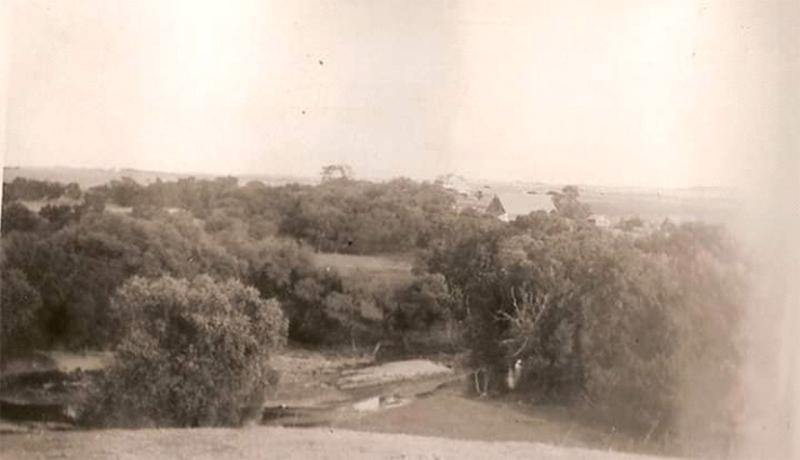
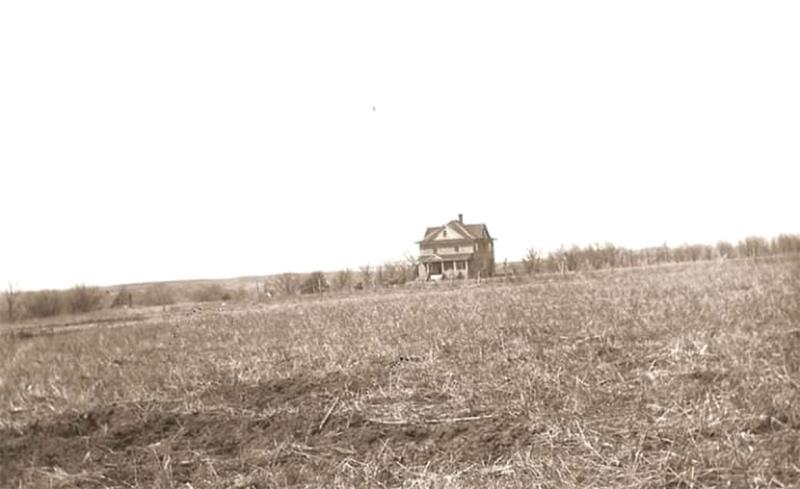
Home in the backdrop, where the roof peaks out on top of the trees. The land here was owned and cared for by John Bauman according to the 1929 zoning map.
The Sievert Swenson House as it appeared between 1930 and 1940 before the family sold the land. The picture was taken from near the barn that stood to the west of the House,while Splitrock Creek meandered from behind the house towards U.S Hwy 16.
Great great grandfather Ole Ask Swenson homesteaded it all around the area. Son Sivert had a third basically, Daughter Bertha or Brigitta married Bergerson and had portion over by Oak ridge, and Daughter Christine Thompson had about the other third of the family land. - Corey B. Thompson
The Sievert Home was constructed in 1913, shortly after the Ole Ask Swenson homestead the property, in those days, Americans traveled from the east, to the west, claimed anywhere between 80 and 160 acres, would build a home, a barn, and work the land for profit, while under the 1841 Preemption Act - they would file for, and make application for a land patent to be the sole property holders of the land free from property taxes.
The Swenson family would have homesteaded this plot of land sometime between 1904 and 1910, when they had built the old barn, of which later, the house shown was constructed thereafter between 1912 and 1913.
According to Donna Harrum Ranschau - The Stone House sold out of the Swenson family 1952 to a Gardner family and was torn down. The house had been vacant and vandalized. The family was very sad that it was ruined by vandals.
That provides us somewhat of a timeline of events whereas this area was being homestead, plotted, and developed as farm country, where as the Sievert Family owned land on the southside of Splitrock Creek on high ground, the Thompson Family owned the land on the northside of Splitrock Creek in the lowlands from 1904 to 1952. Sievert Swenson would die in 1939, which most likely meant his heirs at that point began plan for selling the property, whereas it appears that Til Huset would come to purchase part of the Thompson land, reside on the land, farming a small acreage from sometime after the 1930 Census, to where he later builds Huset's Speedway in 1954 shortly after the Sievert land got sold, while the house shown above was torn down years later after being abandoned, vandalised, and lying in ruins.
Interesting Fact about the entire land area -
The whole area was tagged to become a Lake Association/'Recreational Area' by the Government right before WWII. Sivert Swenson had died in 1939, But I think they found the basin would not feasibly hold water for a man-made lake and that idea was scrapped. Some properties changed hands during that era. Maps were done with cabins to be built along the ridges above the bottom river low lands. I don't have them scanned at this point but can maybe share at a later time if I get the chance. Brandon Historical Society may have input on that timeframe, when the Lake proposition was being discussed. - Corey B. Thompson
Interestingly enough, a lakeside community did sprung up within the area surrounding Six Mile Road in what became known as the Pine Lake Housing Development east of Sioux Falls, and north of Soo Speedway. So what may have been at the location of Huset's Speedway, a planned lakeside housing development, transitioned away from that plan, but as Soo Speedway closed its doors, another lakeside housing development emerged.
What is clear, as early Americans were beginning to move out west, establish land claims, homesteading the land, what is clearly evident, a group of Americans came to the area best known as the spot where three 'streams of water' came to meet, quickly developing the land into farmland, building their homes, livelyhoods, and grooming the land for something special. From farmland, to a planned lake association, to a racetrack, what we have today is a storied past of early pioneers that had a plan, a vision, and the means to develop the land into something special. Perhaps the racetrack was not the original plan, but the great depression, economics, may have spawned a new plan, and between 1940 and 1955 - a new group of people chose this area to establish for themselves a 'race track' that today, has become so popular, it rivals the popularity of the landscape it now calls home.

